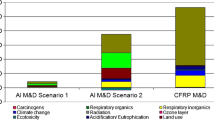Abstract
Modern military vehicles must balance the need for occupant protection against the competing requirements for high mobility and payload capacity. As such, there is continuing interest in the development of lightweight vehicle structures that reduce the overall mass of the hull and armour system, leading to a lighter vehicle. One way to achieve this is through the use of materials that can perform both structural and protective roles, reducing the mass of appliqué armour required to achieve a given level of protection. The aim of the 3-year EUROPA Carbon Fibre for Armoured Fighting Vehicles (CAFV) programme was to investigate the use of carbon fibre composites for use in military vehicle structures. Six nations took part in the programme, each assessing the benefits of carbon fibre composites in terms of their application to at least part of an armoured fighting vehicle (AFV) hull. For the UK, a lower hull section was selected as the focus for the research programme and, as part of the programme, assessed against mine blast threats.





















Similar content being viewed by others
References
NATO Standardisation Agreement 4569, Protection Levels for Occupants of Logistic and Light Armoured Vehicles, edn 1, May 2004
ConWep, United States Army Corps of Engineers, Protective Design Centre, https://doi.org/pdc.usace.army.mil/software/conwep/. Accessed 1st April 2008
NATO Allied Engineering Publication 55, Procedures for evaluating the protection level of logistic and light armoured vehicles, vol 2 for mine threat, edn 1, September 2006
Westerling L et al (2001) Tungsten long rod penetration into confined cylinders of boron carbide at and above ordnance velocities. Int J Impact Eng 25:703
Clegg R et al (2001) Validation of an advanced material model for simulating the impact and shock response of composite materials. In: American Physical Society Shock Compression of Condensed Matter Meeting, Atlanta, Georgia, June 2001
Composite Modelling in AUTODYN, User Documentation, Century Dynamics Limited
White DL et al (2003) Numerical simulation and experimental characterisation of direct hypervelocity impact on a spacecraft hybrid carbon fibre/kevlar composite structure. Int J Impact Eng 29:779
Author information
Authors and Affiliations
Corresponding author
Rights and permissions
About this article
Cite this article
Wright, A., French, M. The response of carbon fibre composites to blast loading via the Europa CAFV programme. J Mater Sci 43, 6619–6629 (2008). https://doi.org/10.1007/s10853-008-2787-7
Received:
Accepted:
Published:
Issue Date:
DOI: https://doi.org/10.1007/s10853-008-2787-7




